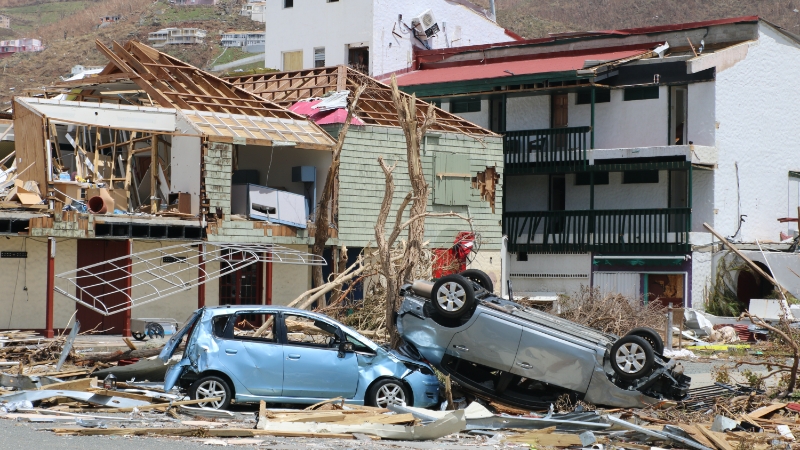Catastrophic Effects of Global Warming and Rising Sea Temperatures.
By Julian Putley
Almost every day on news sites, we see evidence of the results of global warming from around the world. It’s a cause-and-effect routine that is spiralling out of control on planet earth and affecting more and more aspects of life that were formerly little understood. We are seeing catastrophic floods, devastating wildfires, destructive hurricanes and droughts.
There is now no doubt that greenhouse gases, mostly carbon dioxide and methane, are responsible for global warming. Carbon dioxide is produced primarily by the burning of fossil fuels like coal, petroleum products and natural gas. Methane is nearly 30 times more potent than carbon dioxide and is produced by oil and natural gas systems, coal mining, wastewater treatment, animal and human digestive processes, livestock practices like silage, and by the decay of organic waste in landfills. Adding to the alarming escalation of these gases is the destruction of many of the world’s forests, mangroves and wetlands that absorb carbon dioxide by photosynthesis.
One of global warming’s most riveting facts is the escalating temperatures of the world’s oceans coupled with rising sea levels. Ice sheets in the Arctic and Antarctic are melting and adding water to the ocean. On top of that, as the temperature of the sea rises, so it expands. The resulting extra volume of water is proving to be catastrophic for low-lying countries like the Maldives, Kiribati and Tuvalu. These island nations are becoming inundated, while other coastal areas and towns are under threat by tidal erosion. In the US, a NOAA study estimates sea levels will rise about 14 inches (36 cm) in the next 20 years. Then take into account the very low pressure formed by hurricanes and wind-driven storm surge and many areas in the path of hurricanes are at serious risk.

Portugal is little affected by hurricane activity, but like all coastal countries, rising sea levels are a concern. Estuaries and coastal lagoons will be most affected and waterfront properties and commercial ventures may well be negatively impacted. Of particular concern are the Ria Formosa in the Algarve and the region around Ria de Aveiro. Interestingly, Portugal has been at the forefront of reducing harmful greenhouse gas emissions, with the last coal-fired electrical plant closing this year.
Floods and forest fires have had catastrophic effects on many lives in an ever-increasing way over the last 24 months. California in the US has had – and is still having – record-breaking wildfires as are many parts of Europe (including Portugal) and Australia. Global warming as a result of climate change is the cause. Rising temperatures dry out large landmasses and rainfall diminishes. Lightening or human action provides the spark.
Unprecedented floods in parts of Europe were the result of warm air, increased evaporation and condensation at higher altitudes. Unheard of continuous downpours burst river banks and decimated towns and villages.
Hurricanes and tropical storms have increased in intensity in recent years. Catastrophic damage is caused by torrential rains and winds of exceptional power. Rising sea surface temperatures are a driving force behind these phenomena. As water vapour heats up, it rises and cooler air rushes in to replace it. The more sea surface temperatures rise, the more intense the storms become.
Caribbean hurricanes are spawned off the west coast of Africa, where dense moist cloud masses move off the equatorial regions and head west due to the earth’s rotation.

This writer has experienced many hurricanes in the Caribbean, specifically the Virgin Islands. Hurricane Irma in 2017 was a category five storm and one of the most intense cyclones ever to form in the Atlantic basin. To make matters worse, a second hurricane, Maria, impacted the archipelago just two weeks later. The cost of damage to the islands from Irma was around six billion US dollars. The US mainland experienced a much-diminished storm but damage there was estimated at over 50 billion US dollars. Four years later, many resorts and homes are still not rebuilt and functional. The cost of loss of earnings and revenue is incalculable.
To sum up the above, it’s way past time for all nations in the world to address this problem. The conundrum for world leaders is that to reduce the effects of the greenhouse gases that create global warming means stemming the production of fossil fuels (oil, gas, coal) NOW. Loss of revenue and jobs in these industries may result in loss of votes for politicians who are then loath to act in the planet’s best interests. They resort to the ‘blah, blah, blah’ method so aptly described by Greta Thunberg, the Swedish climate activist. Politicians have long used the philosophy ‘If you can’t blind ‘em with science, then baffle them with BS’. It’s time for strong leaders with vision, ethics and integrity.
So, what can we as individuals do? As soon as possible, change to an electric vehicle. Be conservative with your use of electricity and gas (which may soon be a thing of the past). Supermarkets and shops are still using vast amounts of plastic, a by-product of fossil fuel. Avoid using it as much as possible and dispose of any you do have in recycling bins. Eat fresh fruits and vegetables and avoid too muchprocessed food. And cut down on meat from methaneproducing animals. In the end, if there’s no demand, then the supply will diminish and eventually dry up.
Planet earth is under serious threat. Cataclysmic events are on the increase. The time to act is NOW.















